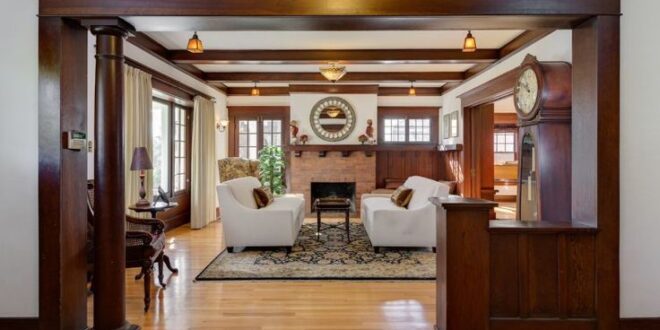The Enduring Appeal of Craftsman Style Interiors
Craftsman style homes, with their emphasis on natural materials, handcrafted details, and a connection to the outdoors, have captivated homeowners for over a century. The interior design of these homes reflects a philosophy of simplicity, functionality, and artistry, creating spaces that are both beautiful and livable. But what exactly defines a Craftsman style interior, and how can you incorporate this timeless aesthetic into your own home? Let’s delve into the key elements and design principles that make Craftsman style interiors so appealing.
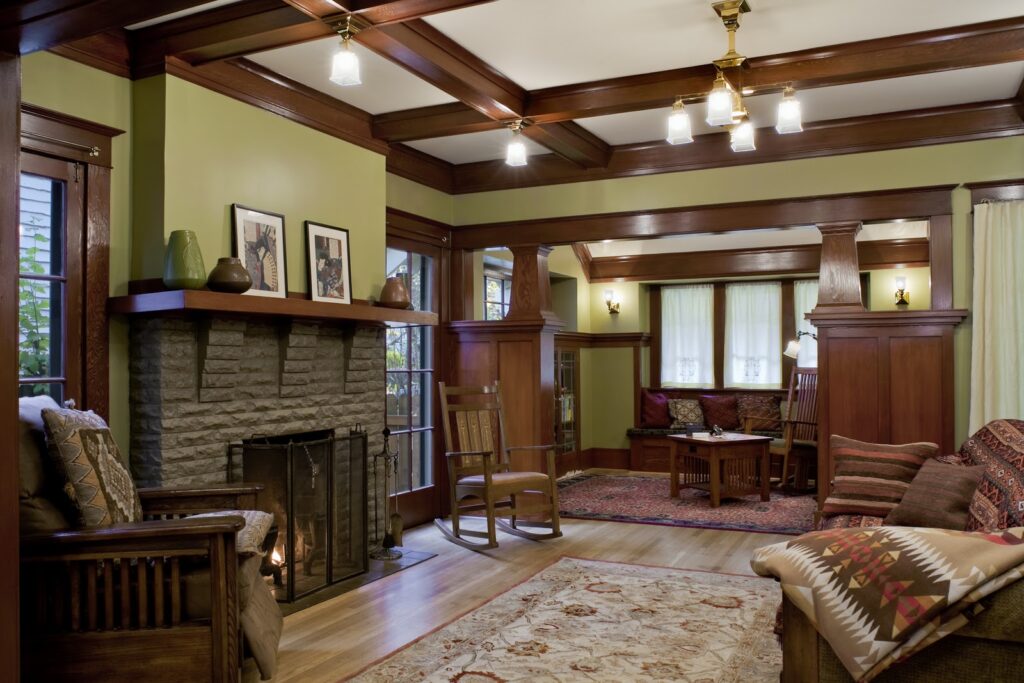
The Craftsman movement emerged in the late 19th and early 20th centuries as a reaction against the mass-produced, ornate styles of the Victorian era. Proponents of the movement championed handcrafted goods, natural materials, and honest construction. This philosophy translated into architecture and interior design that celebrated simplicity, functionality, and the beauty of natural elements. The result was a style that was both aesthetically pleasing and deeply rooted in a sense of integrity and authenticity. The allure of the Craftsman style transcends fleeting trends; it’s a timeless expression of quality and a connection to nature, which continues to resonate with homeowners today. The handcrafted elements tell a story, whispering of the artisan’s touch and the enduring value of well-made objects.

Key Elements of Craftsman Style Interiors
Craftsman style interiors are characterized by several distinct elements that work together to create a cohesive and harmonious look. Understanding these elements is crucial for successfully incorporating the style into your home.
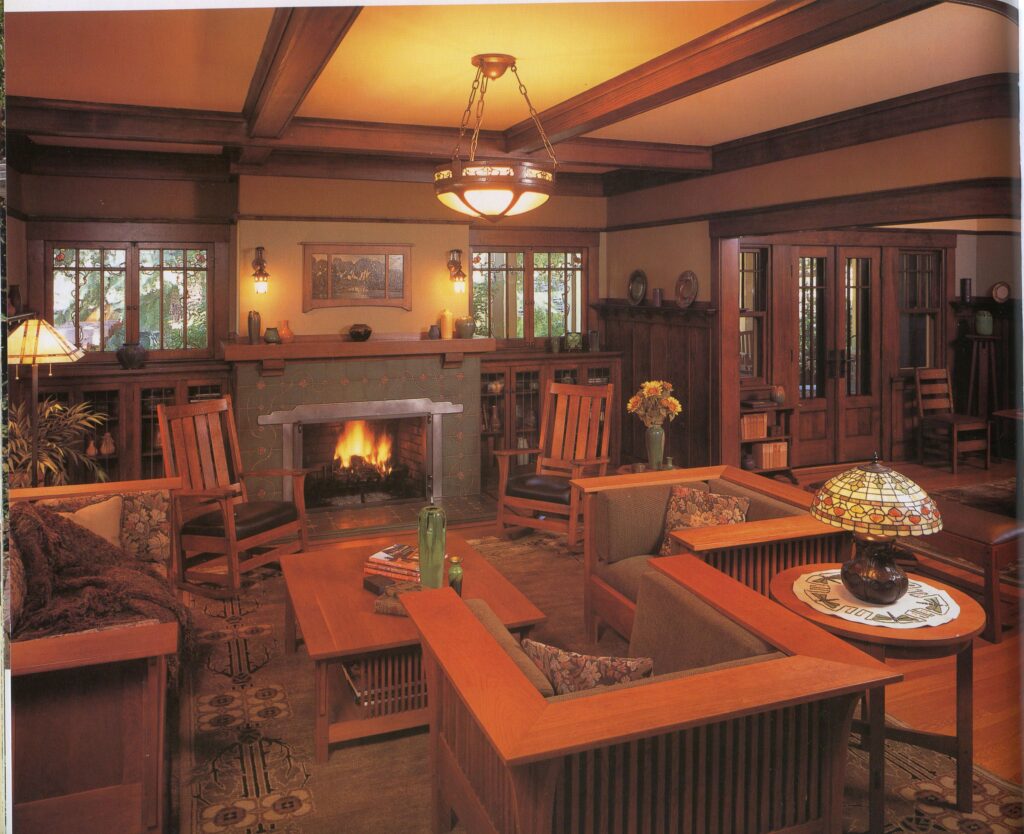
Natural Materials
Wood is the star of the show in Craftsman interiors. Expect to see a lot of oak, maple, and fir, often stained in warm, natural tones. Wood is used extensively for trim, moldings, flooring, cabinetry, and furniture. Stone and brick are also common materials, particularly for fireplaces and exterior accents. The emphasis is always on showcasing the natural beauty of these materials, rather than covering them up with paint or elaborate ornamentation. The tactile feel of wood grain under your fingertips, the cool smoothness of stone – these sensory experiences are integral to the Craftsman aesthetic. You can almost feel the connection to the earth itself.
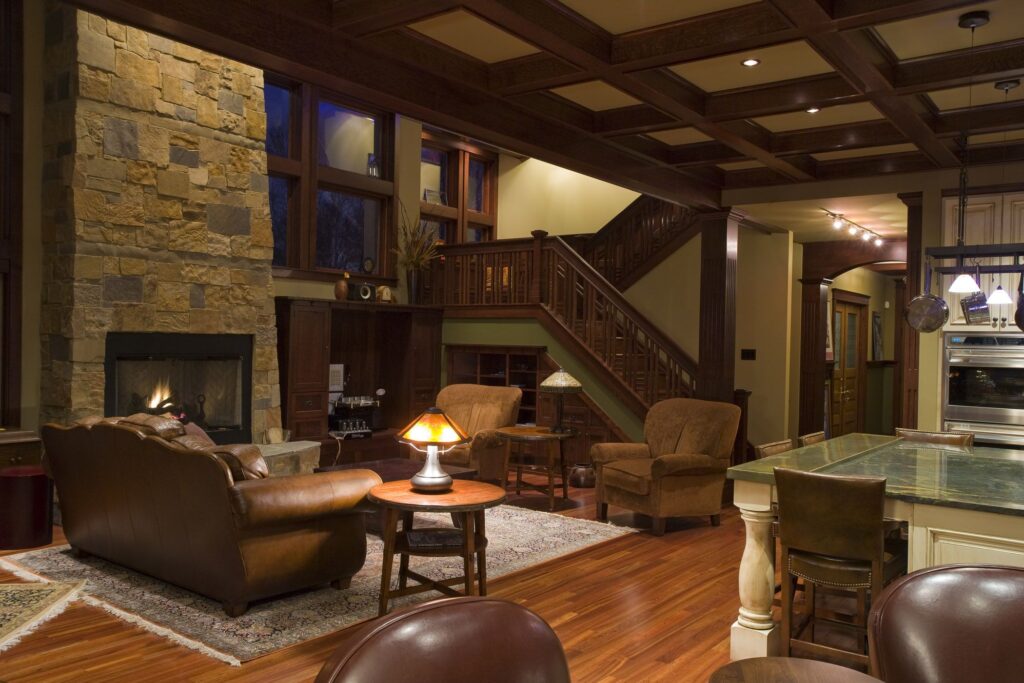
Exposed Structural Elements
One of the defining features of Craftsman homes is the exposure of structural elements like beams, rafters, and posts. These elements are not hidden behind drywall but are instead celebrated as integral parts of the design. Exposing these elements adds architectural interest and reinforces the sense of honesty and craftsmanship that is central to the style. Imagine the visual impact of exposed ceiling beams, drawing the eye upward and creating a sense of spaciousness. These structural elements become a design feature, adding character and warmth to the room.
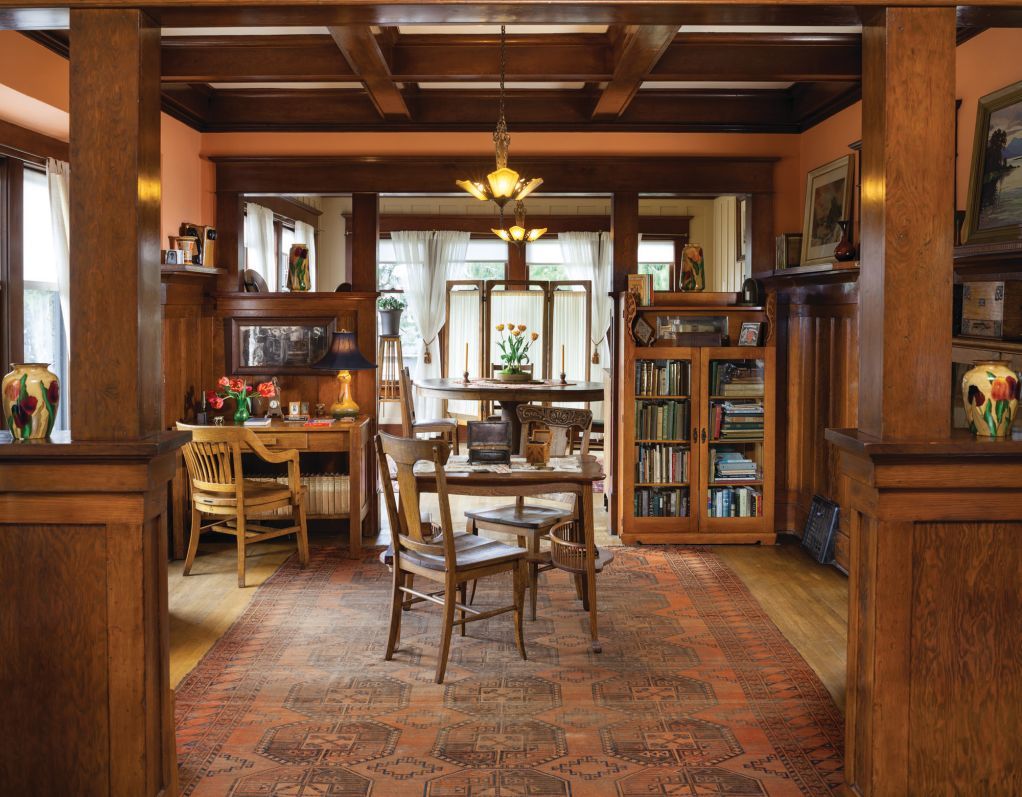
Built-in Furniture and Features
Built-in furniture and features are another hallmark of Craftsman interiors. Think of built-in bookcases, window seats, banquettes, and fireplace surrounds. These elements are seamlessly integrated into the architecture of the home, maximizing space and adding functionality. Built-ins also contribute to the sense of permanence and solidity that is characteristic of the style. These aren’t just pieces of furniture; they are an intrinsic part of the home’s design, adding both beauty and practicality. They provide storage, seating, and architectural interest, all in one.
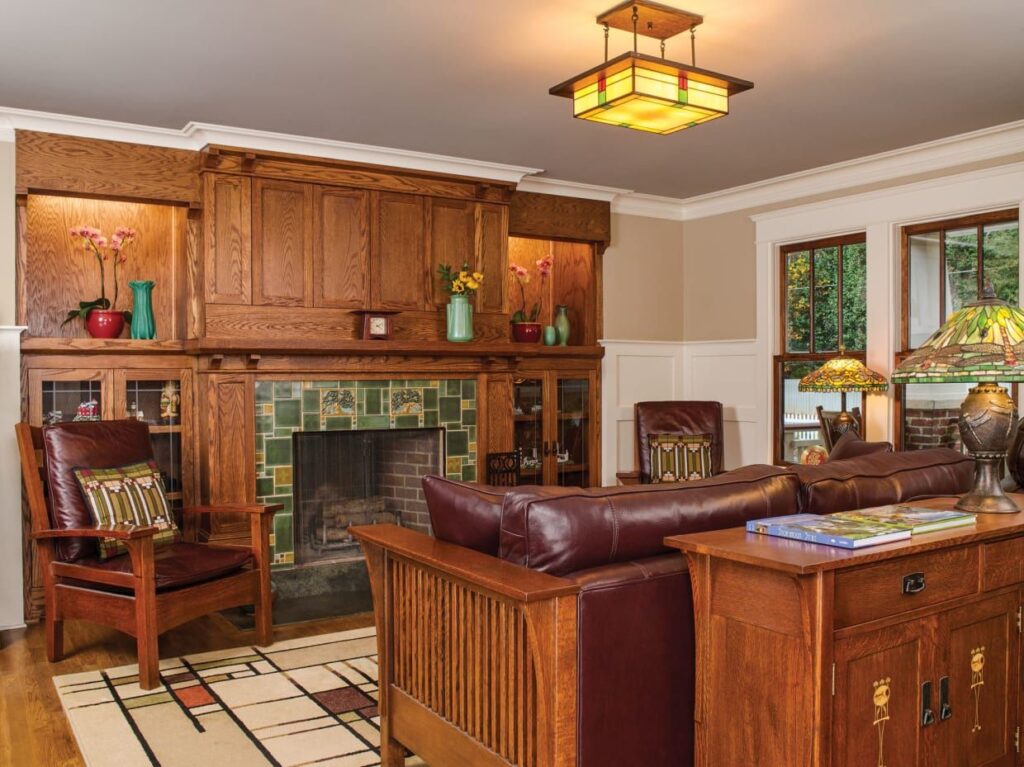
Simple, Clean Lines
Craftsman style emphasizes simple, clean lines and a lack of excessive ornamentation. Furniture and architectural details are typically straightforward and functional, with an emphasis on quality craftsmanship rather than elaborate decoration. This simplicity allows the natural beauty of the materials to shine through and creates a sense of calm and order. The absence of fussy details allows the eye to rest, creating a serene and uncluttered environment. The beauty lies in the simple elegance of the forms, highlighting the quality of the materials and the skill of the craftsman.
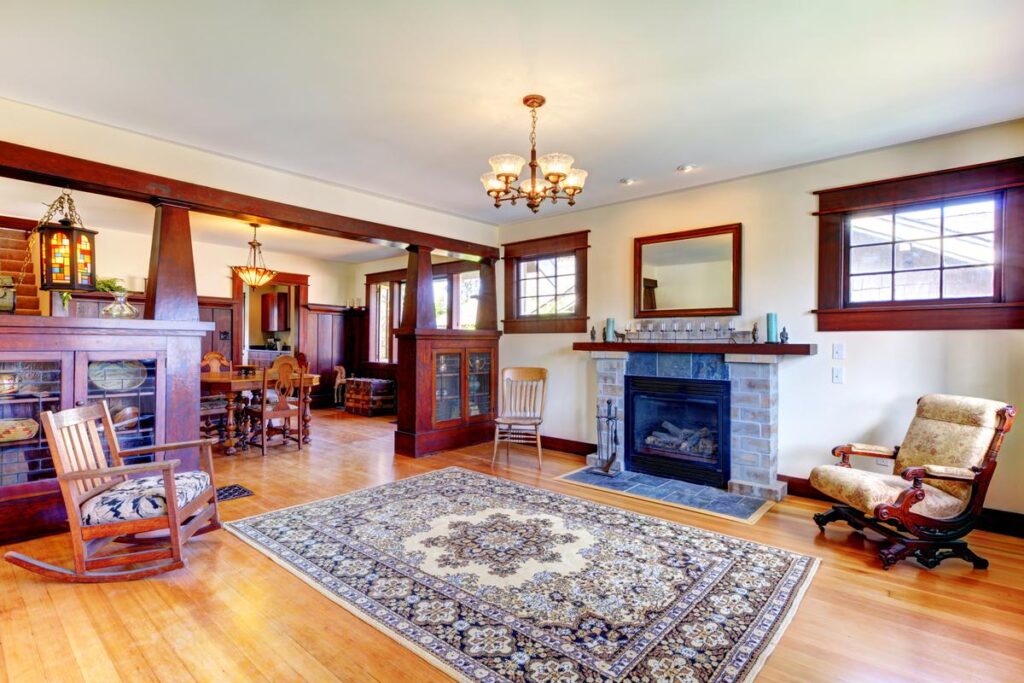
Warm, Earthy Color Palette
Craftsman interiors typically feature a warm, earthy color palette inspired by nature. Think of colors like greens, browns, golds, and reds, often in muted or muted tones. These colors create a sense of warmth and comfort and complement the natural materials used throughout the home. Accents of copper, bronze, and other metallic finishes are also common. The goal is to create a space that feels inviting and grounded, reflecting the natural world outside. These colors evoke feelings of warmth, comfort, and connection to nature, creating a soothing and inviting atmosphere.

Emphasis on Light and Ventilation
Craftsman homes are designed to maximize natural light and ventilation. Large windows, often arranged in banks or groupings, allow ample sunlight to flood the interior. Overhanging eaves and porches provide shade and protection from the elements. Natural ventilation is also important, with windows and doors strategically placed to promote airflow. The focus is on creating a healthy and comfortable living environment that is connected to the outdoors. Sunlight streaming through large windows, fresh air circulating through the home – these are essential elements of the Craftsman lifestyle.

Incorporating Craftsman Style into Your Home
Whether you’re renovating an existing home or building a new one, there are many ways to incorporate Craftsman style elements into your interior design. Here are some tips to get you started:
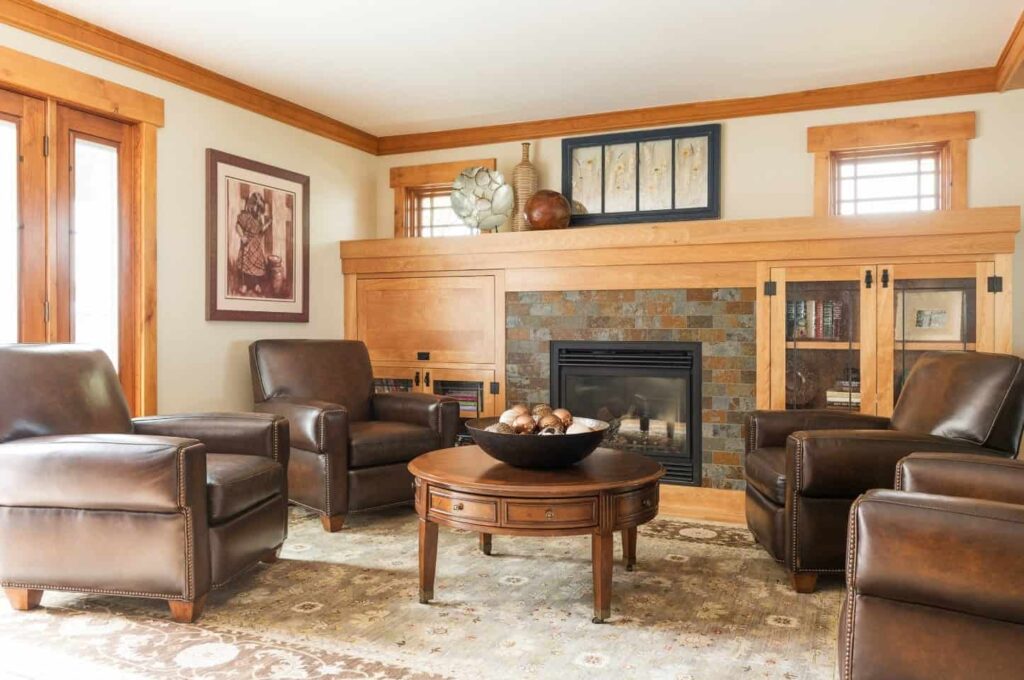
Start with the Basics
Focus on the foundational elements of the style, such as natural materials, exposed structural elements, and a warm, earthy color palette. These elements will provide a strong foundation for your design and help to create a cohesive look. For example, consider replacing your existing flooring with hardwood or adding wood trim around your windows and doors. These simple changes can make a big difference in the overall feel of your space.

Add Built-in Features
Incorporate built-in furniture and features wherever possible. This could include built-in bookcases in your living room, a window seat in your bedroom, or a banquette in your dining area. Built-ins not only add functionality but also enhance the architectural character of your home. The design must flow with the existing structure, so it appears as a natural extension of the home, not an afterthought.

Choose Craftsman-Inspired Furniture
Select furniture that is simple, well-made, and reflects the Craftsman aesthetic. Look for pieces made from solid wood with clean lines and minimal ornamentation. Leather upholstery and handcrafted details are also good choices. Avoid furniture that is overly ornate or mass-produced. Think about quality over quantity, investing in pieces that will last for years to come. Look for items that showcase natural materials and simple forms.

Pay Attention to Lighting
Choose lighting fixtures that are appropriate for the Craftsman style. Look for fixtures with simple, geometric shapes and natural materials like copper, bronze, and glass. Avoid overly ornate or modern fixtures. Pendant lights, sconces, and table lamps are all good options. Also, consider the placement of your lighting to maximize natural light and create a warm and inviting atmosphere. The aim is to create layers of light, combining ambient, task, and accent lighting to enhance the mood and functionality of the space.
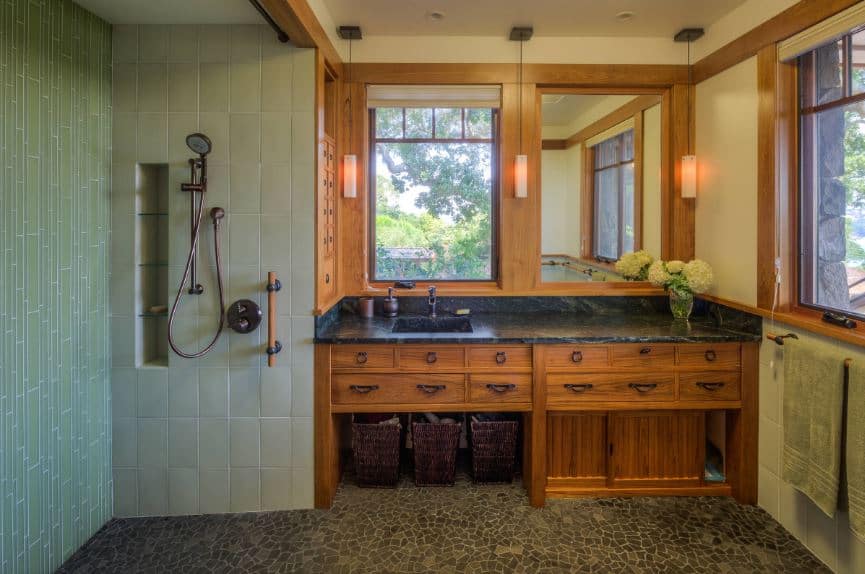
Accessorize Thoughtfully
Accessorize your Craftsman style interior with carefully chosen items that reflect the style’s emphasis on nature, craftsmanship, and simplicity. Consider adding pottery, artwork, textiles, and other decorative objects that are handcrafted or inspired by nature. Avoid clutter and focus on quality over quantity. Each piece should have a purpose and contribute to the overall aesthetic of the space. Think of items that tell a story or evoke a sense of history and tradition.

Embrace Imperfection
Craftsman style celebrates the beauty of imperfection and the individuality of handcrafted goods. Don’t strive for perfect symmetry or flawless finishes. Instead, embrace the slight variations and imperfections that are inherent in natural materials and handcrafted objects. This will add character and authenticity to your Craftsman style interior. The beauty lies in the unique qualities of each piece, reflecting the artisan’s touch and the natural variations of the materials.
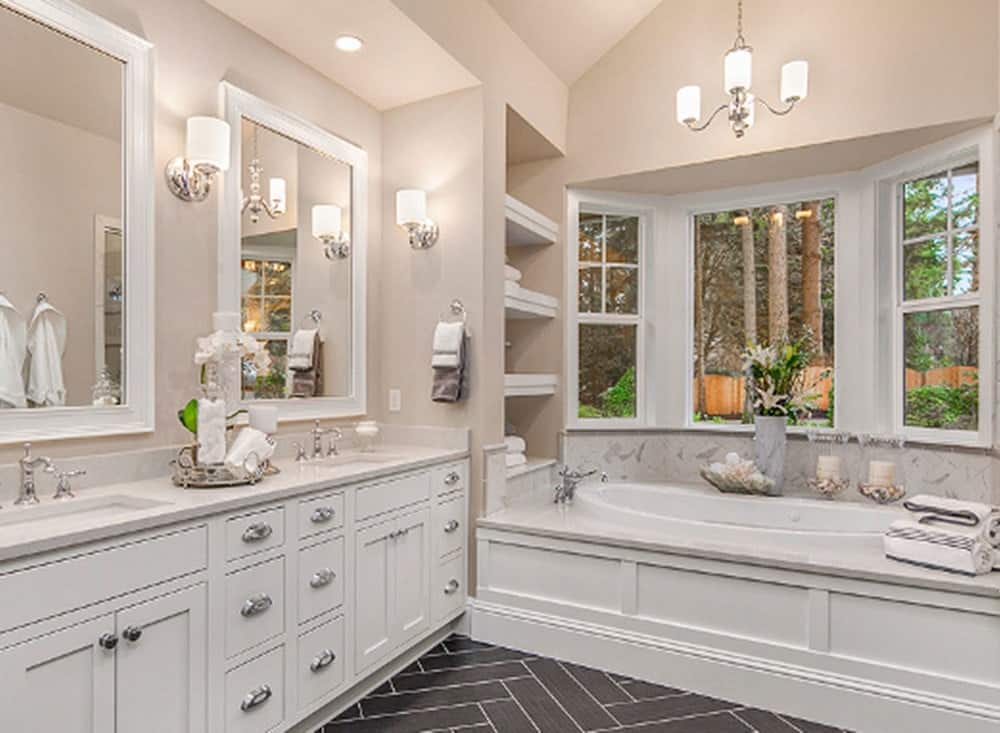
Color Palettes for Craftsman Style Homes
Choosing the right color palette is crucial for creating an authentic Craftsman style interior. Here are some popular color schemes to consider:
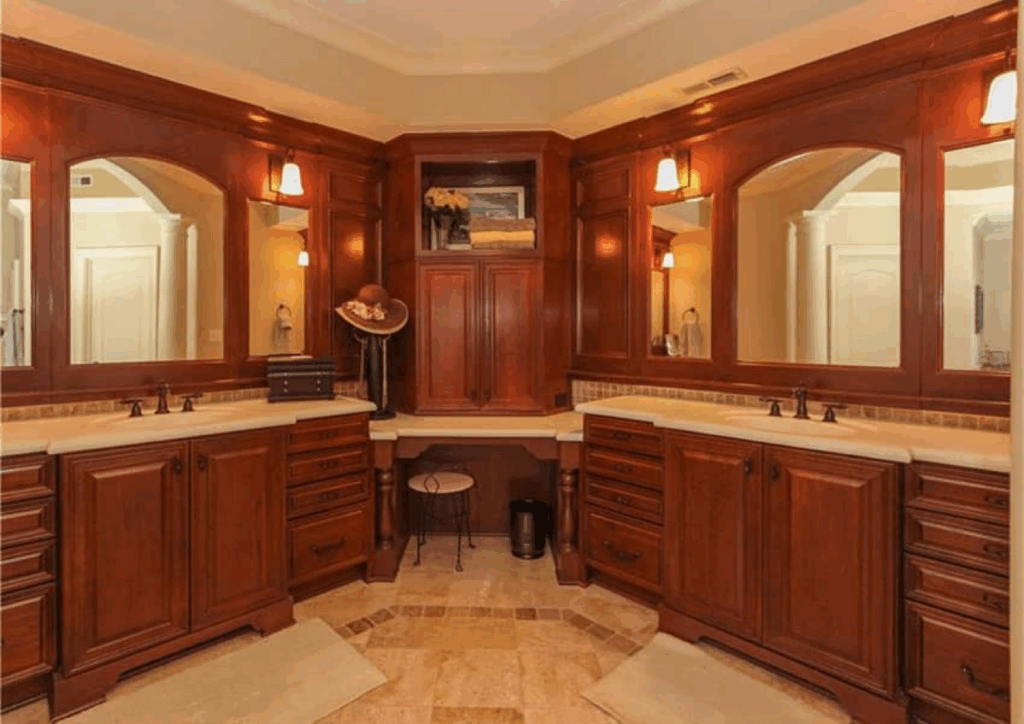
Earthy Neutrals
A palette of warm neutrals like beige, tan, and cream creates a calming and inviting atmosphere. These colors can be paired with natural wood tones and accents of green, brown, and gold. This is a versatile and timeless palette that works well in any room. Imagine a living room with beige walls, a tan sofa, and cream-colored trim, accented with wooden furniture and green plants. The warmth and serenity of this color scheme create a welcoming and relaxing space.
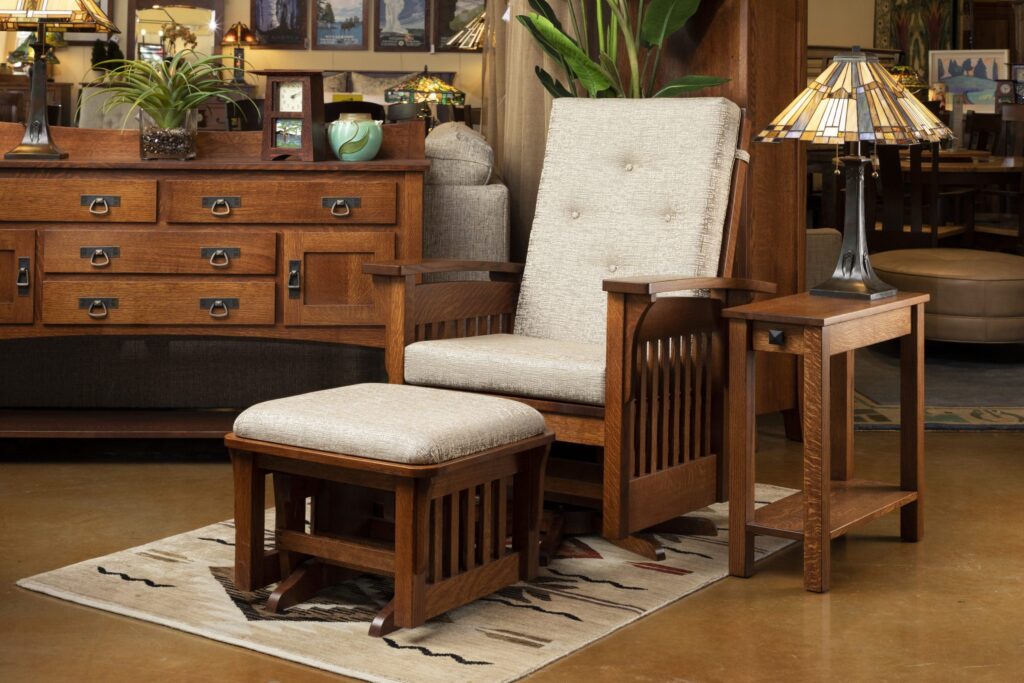
Forest Greens and Browns
A palette inspired by the forest, with shades of green, brown, and deep red, creates a rich and earthy feel. These colors can be used for walls, upholstery, and accessories. Accents of copper and bronze add warmth and depth. This palette is perfect for creating a cozy and inviting space that feels connected to nature. Picture a dining room with green walls, a dark wood table, and brown leather chairs, accented with copper candlesticks and a deep red rug. The richness and depth of this color scheme create a sense of warmth and sophistication.
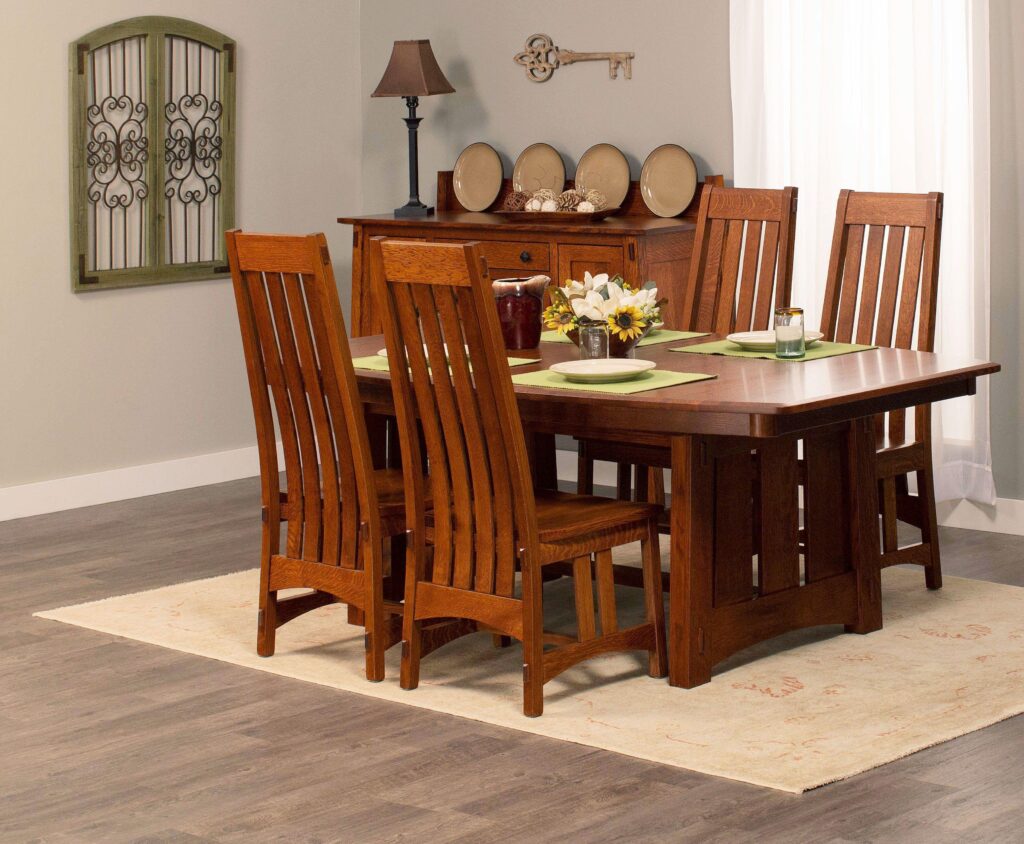
Golden Yellows and Oranges
A palette of golden yellows and oranges adds warmth and vibrancy to a Craftsman style interior. These colors can be used for walls, upholstery, and accessories. Accents of brown and green provide a grounding effect. This palette is perfect for creating a cheerful and inviting space that feels full of life. Envision a kitchen with yellow walls, orange cabinets, and brown countertops, accented with green plants and copper hardware. The warmth and vibrancy of this color scheme create a cheerful and inviting space.
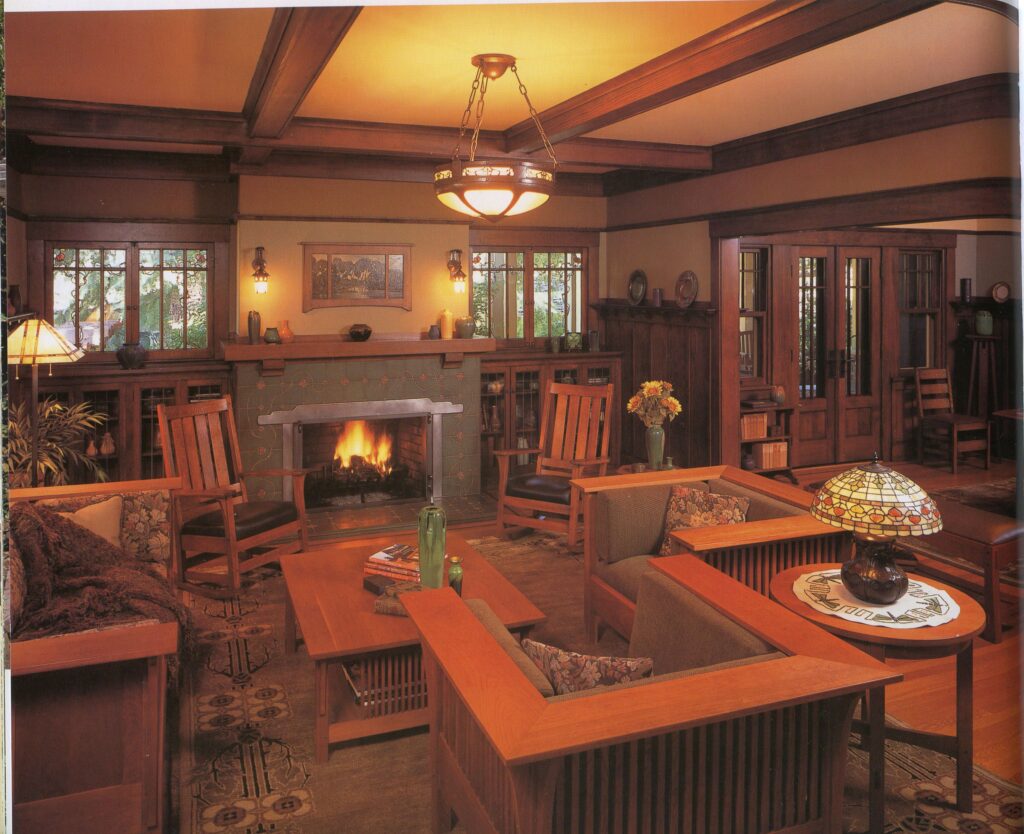
Muted Blues and Grays
A palette of muted blues and grays creates a calming and sophisticated atmosphere. These colors can be used for walls, upholstery, and accessories. Accents of white and wood add brightness and warmth. This palette is perfect for creating a serene and relaxing space. Think of a bedroom with gray walls, a blue duvet cover, and white trim, accented with wooden furniture and silver accessories. The calmness and sophistication of this color scheme create a tranquil and relaxing space.
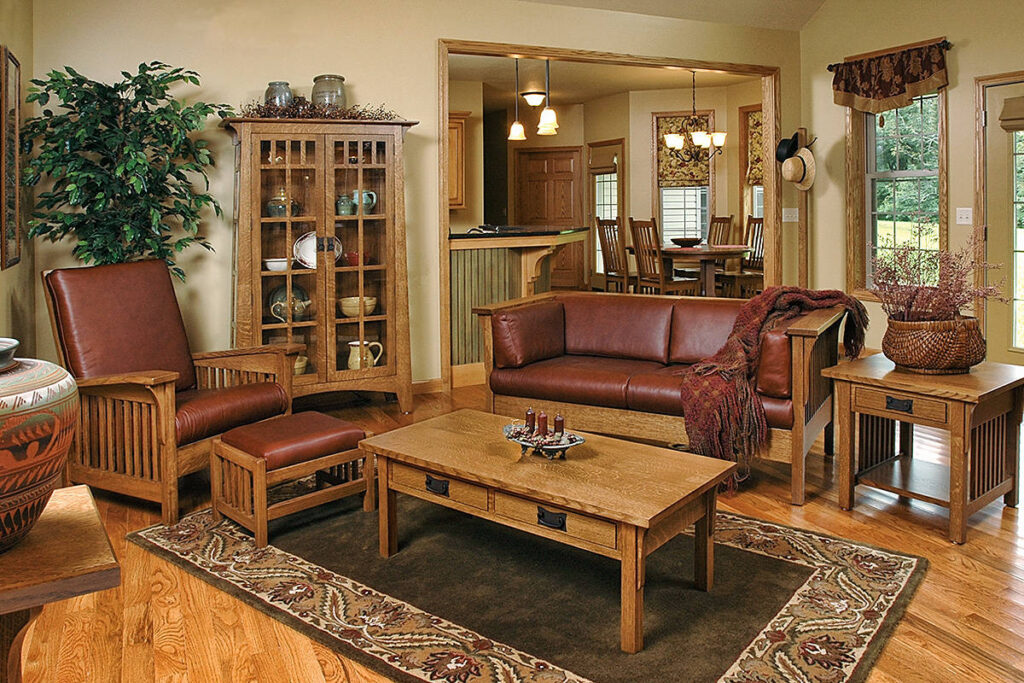
Adding Pops of Color
While Craftsman interiors typically feature earthy and muted colors, you can add pops of color to create visual interest and personality. Consider adding a colorful rug, a vibrant piece of artwork, or a few decorative pillows in bold hues. Just be sure to use these pops of color sparingly and in a way that complements the overall aesthetic of the space. The goal is to add a touch of personality without overpowering the natural beauty and simplicity of the Craftsman style.
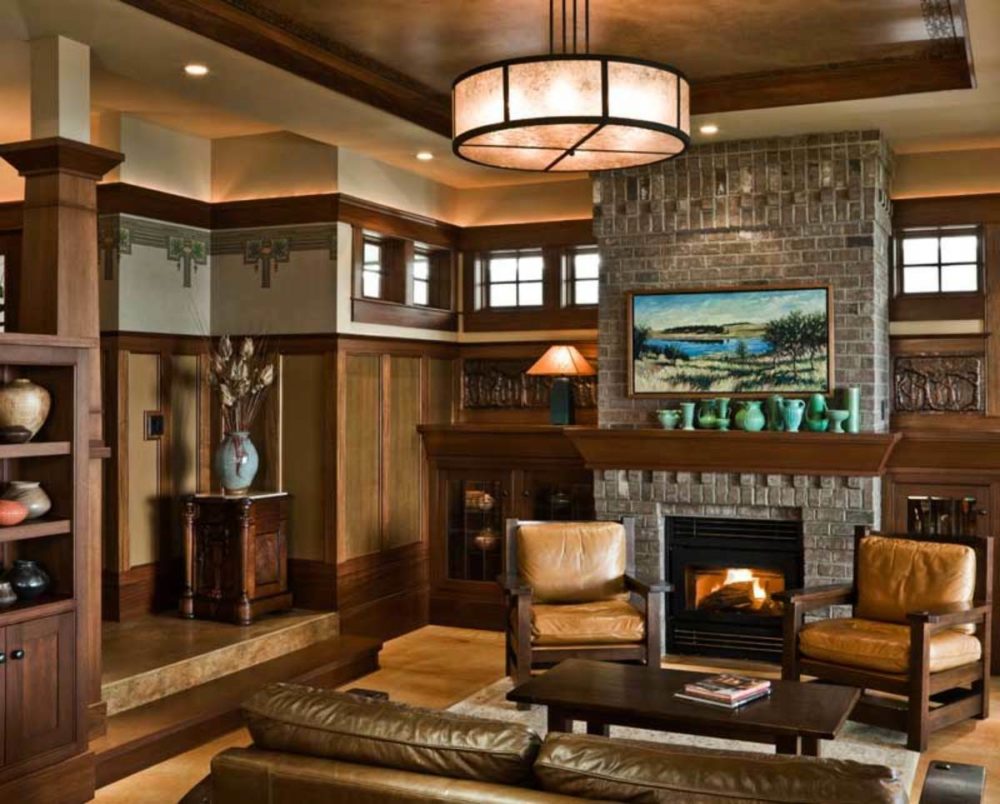
Craftsman Style Kitchens: The Heart of the Home
The kitchen is often considered the heart of the home, and in a Craftsman style house, it’s no exception. Craftsman kitchens are designed to be both functional and beautiful, with a focus on natural materials, handcrafted details, and a connection to the outdoors.
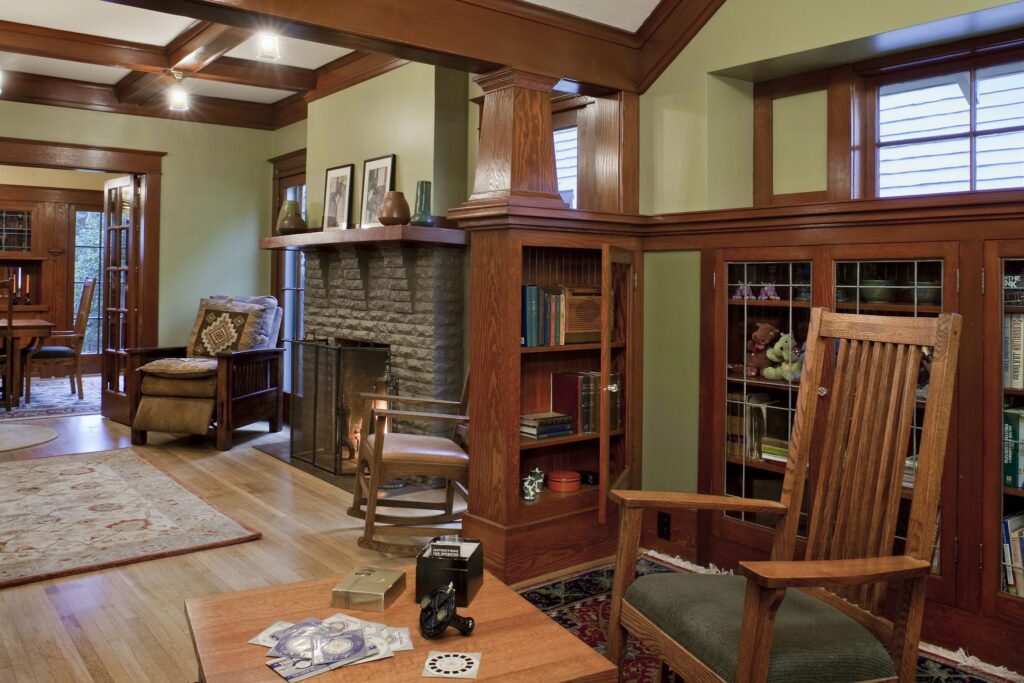
Cabinetry
Cabinetry is a key element in any kitchen, and in a Craftsman kitchen, it’s especially important. Look for cabinets made from solid wood, such as oak, maple, or cherry. The cabinets should have simple, clean lines and minimal ornamentation. Shaker-style cabinets are a popular choice for Craftsman kitchens. The finish should be natural or stained in a warm, earthy tone. Avoid overly ornate or modern cabinets. Details like exposed hinges and handcrafted pulls can add to the authentic Craftsman feel. The key is to choose cabinets that are both functional and aesthetically pleasing, reflecting the style’s emphasis on craftsmanship and natural materials.
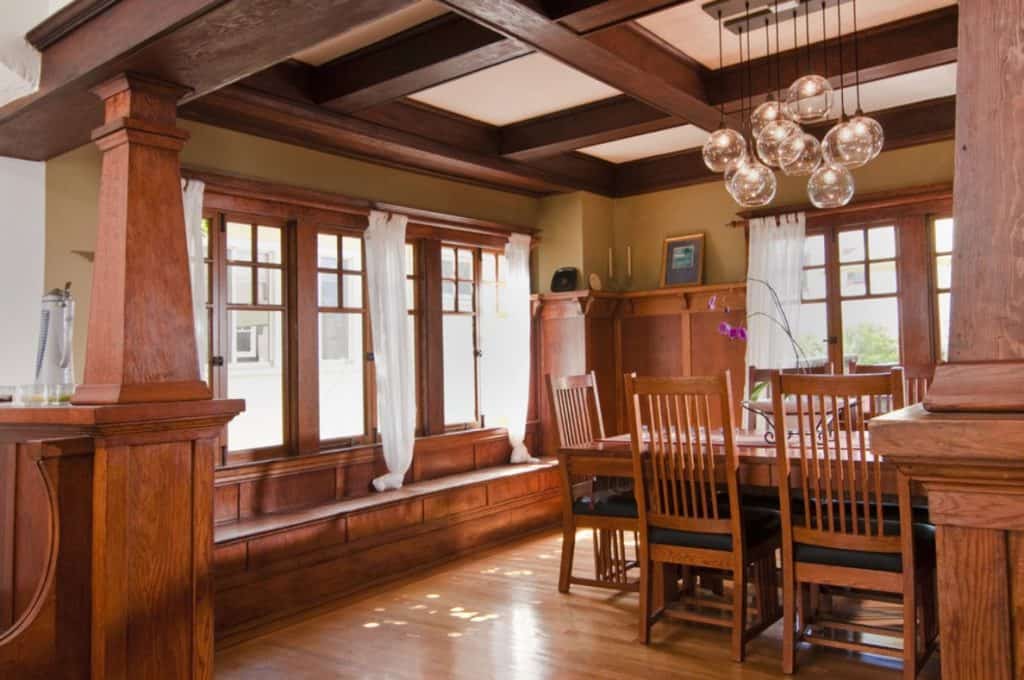
Countertops
Countertops should be made from durable and natural materials, such as granite, soapstone, or wood. Avoid laminate or other synthetic materials. The countertops should be easy to clean and maintain. Consider adding a butcher block countertop on an island or peninsula for food preparation. The natural beauty and durability of these materials make them ideal choices for a Craftsman kitchen. The countertops should complement the cabinetry and other elements in the kitchen, creating a cohesive and harmonious look.

Flooring
Flooring should be made from natural materials, such as hardwood, tile, or stone. Hardwood is a popular choice for Craftsman kitchens, as it adds warmth and character to the space. Tile and stone are also good options, especially in areas that are prone to moisture. Avoid carpeting or other soft flooring materials. The flooring should be durable and easy to clean. Consider adding a rug to define the cooking area or add a pop of color. The natural beauty and durability of these materials make them ideal choices for a Craftsman kitchen.
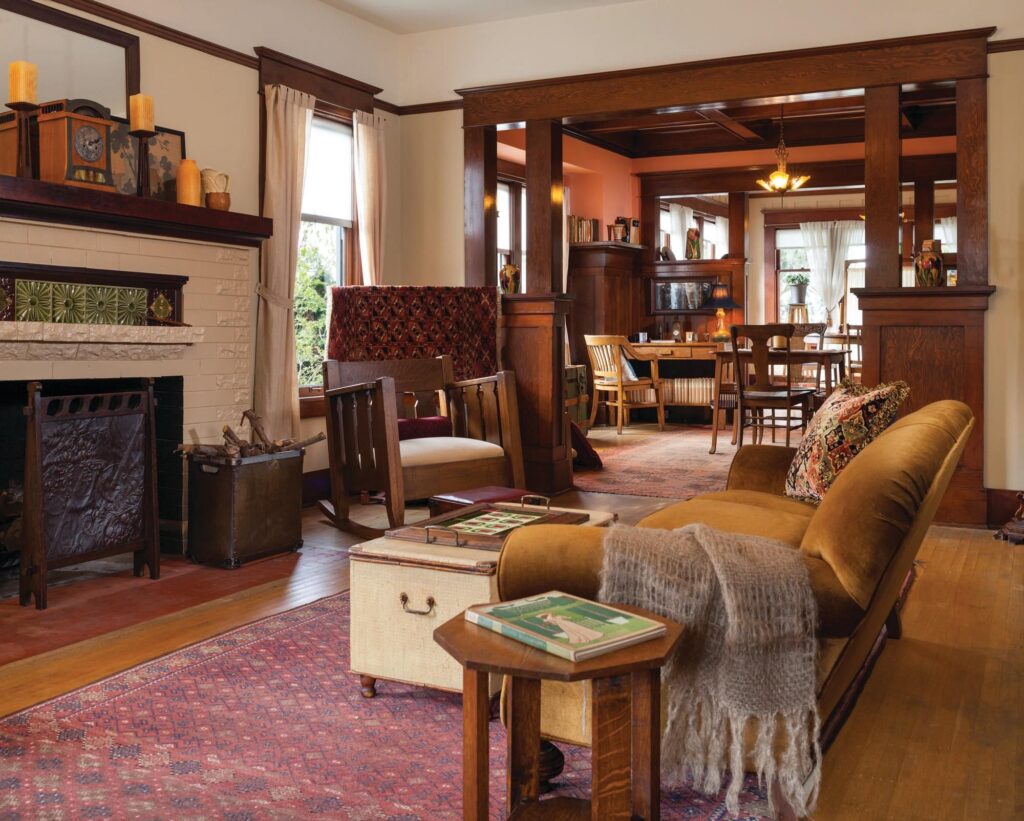
Appliances
Appliances should be chosen carefully to complement the Craftsman style. Look for appliances with clean lines and simple designs. Stainless steel appliances are a popular choice, but you can also find appliances in other finishes, such as black or white. Avoid appliances that are overly modern or futuristic. Consider adding a vintage-style range or refrigerator for a more authentic look. The appliances should be functional and efficient, while also blending seamlessly into the overall design of the kitchen.

Lighting
Lighting is an important element in any kitchen, and in a Craftsman kitchen, it’s especially important to create a warm and inviting atmosphere. Use a combination of ambient, task, and accent lighting to illuminate the space. Pendant lights over the island or peninsula are a popular choice, as are recessed lights in the ceiling. Under-cabinet lighting can provide task lighting for food preparation. Consider adding sconces or table lamps for accent lighting. The lighting fixtures should be chosen to complement the Craftsman style, with simple, geometric shapes and natural materials like copper, bronze, and glass.
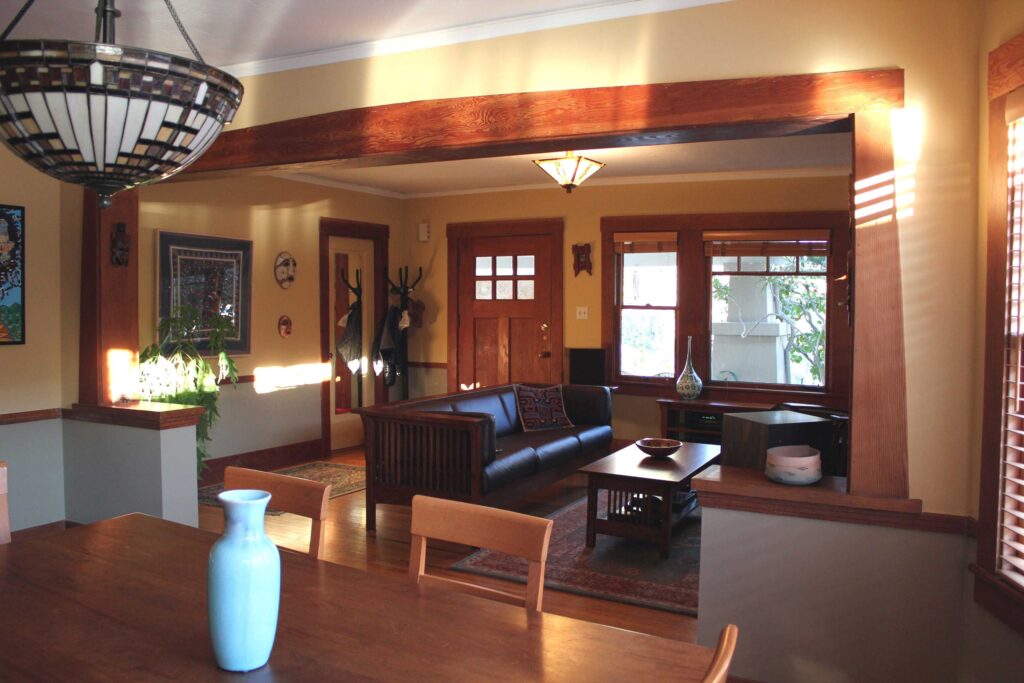
Craftsman Style Bathrooms: A Sanctuary of Serenity
Craftsman style bathrooms are designed to be tranquil and relaxing spaces, with a focus on natural materials, handcrafted details, and a connection to the outdoors. The goal is to create a sanctuary where you can escape from the stresses of daily life.

Vanities
Vanities should be made from solid wood, such as oak, maple, or cherry. The vanities should have simple, clean lines and minimal ornamentation. Shaker-style vanities are a popular choice for Craftsman bathrooms. The finish should be natural or stained in a warm, earthy tone. Consider adding a vessel sink for a more modern touch. The vanities should provide ample storage space for toiletries and other bathroom essentials. The key is to choose vanities that are both functional and aesthetically pleasing, reflecting the style’s emphasis on craftsmanship and natural materials.

Tubs and Showers
Tubs and showers should be chosen to complement the Craftsman style. Clawfoot tubs are a classic choice for Craftsman bathrooms. You can also find freestanding tubs with simple, clean lines. Showers should have tile walls and a glass enclosure. Consider adding a rain showerhead for a more luxurious experience. The tubs and showers should be both functional and beautiful, creating a relaxing and inviting space.
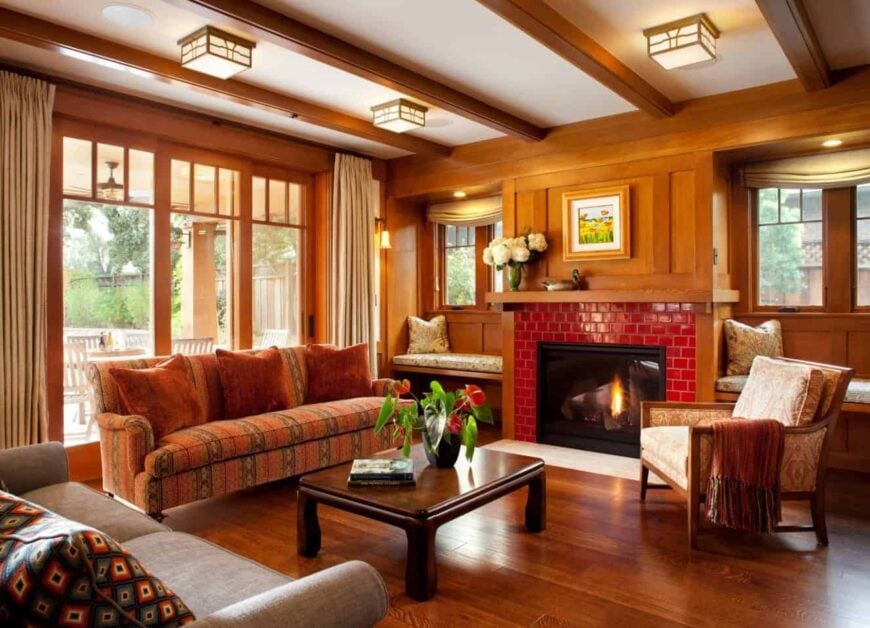
Tile
Tile is a key element in any bathroom, and in a Craftsman bathroom, it’s especially important to choose tiles that reflect the style’s emphasis on natural materials and handcrafted details. Look for tiles made from natural stone, such as marble, granite, or slate. Subway tiles are a popular choice for Craftsman bathrooms, as are mosaic tiles. The tiles should be arranged in a simple, geometric pattern. Avoid tiles that are overly ornate or modern. The tiles should be durable and easy to clean. Consider adding a border or accent tile to add visual interest. The key is to choose tiles that are both functional and aesthetically pleasing, creating a cohesive and harmonious look.
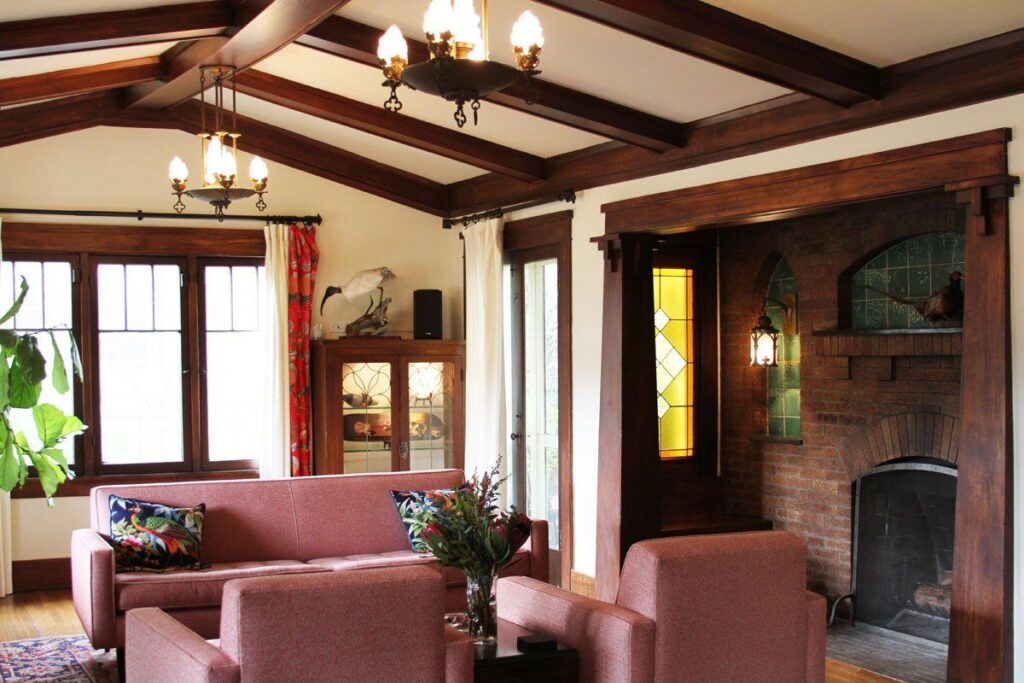
Lighting
Lighting is an important element in any bathroom, and in a Craftsman bathroom, it’s especially important to create a warm and inviting atmosphere. Use a combination of ambient, task, and accent lighting to illuminate the space. Vanity lights should provide ample light for grooming. Recessed lights in the ceiling can provide ambient lighting. Sconces or table lamps can provide accent lighting. The lighting fixtures should be chosen to complement the Craftsman style, with simple, geometric shapes and natural materials like copper, bronze, and glass.
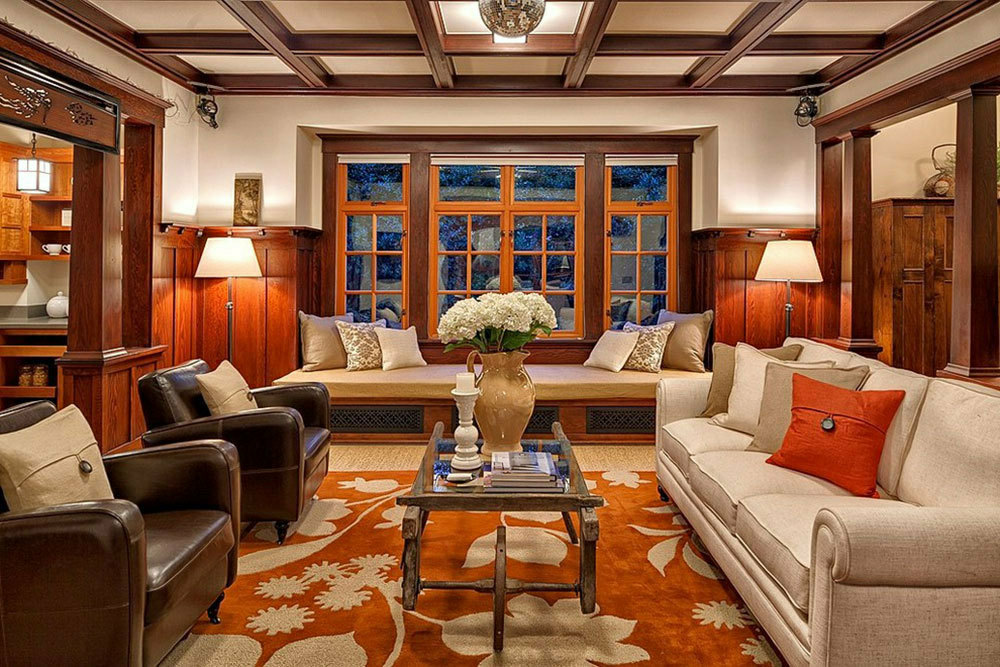
Accessories
Accessorize your Craftsman style bathroom with carefully chosen items that reflect the style’s emphasis on nature, craftsmanship, and simplicity. Consider adding pottery, artwork, textiles, and other decorative objects that are handcrafted or inspired by nature. Avoid clutter and focus on quality over quantity. Each piece should have a purpose and contribute to the overall aesthetic of the space. Think of items that tell a story or evoke a sense of history and tradition.

The Enduring Legacy of Craftsman Style
Craftsman style interiors offer a timeless and enduring appeal, combining beauty, functionality, and a deep connection to nature. By understanding the key elements and design principles of the style, you can create a home that is both beautiful and livable, a sanctuary that reflects your personal style and values. The Craftsman movement was more than just a design trend; it was a philosophy of living, one that emphasized honesty, craftsmanship, and a connection to the natural world. This philosophy continues to resonate with homeowners today, who are drawn to the style’s timeless appeal and its ability to create spaces that are both beautiful and functional.
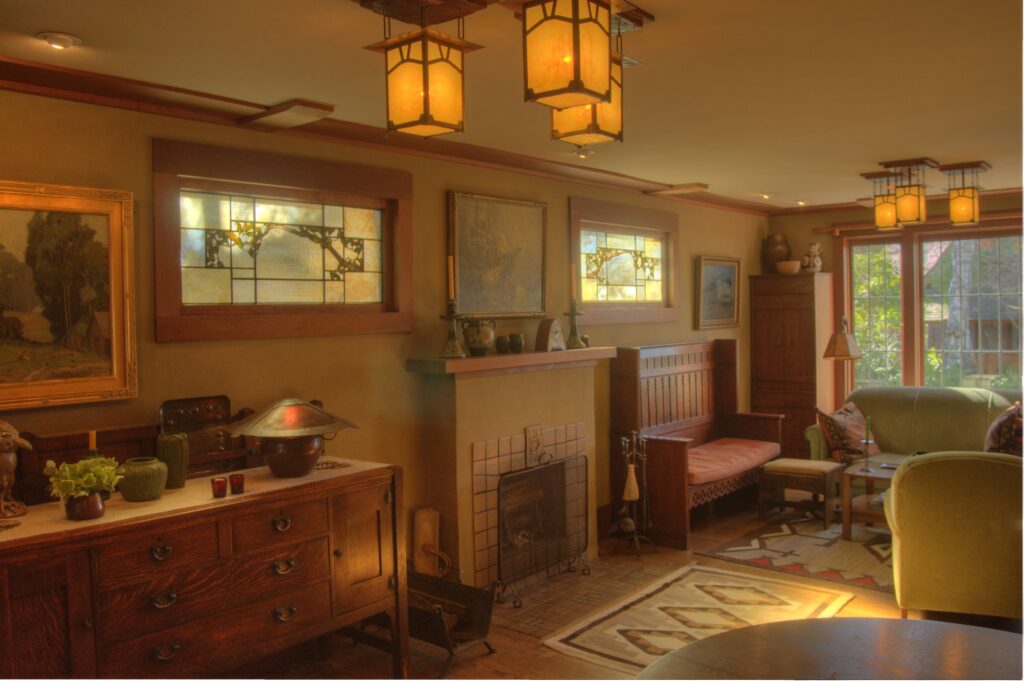
Whether you are renovating an existing home or building a new one, consider embracing the principles of Craftsman design. You’ll be rewarded with a home that is not only beautiful but also a reflection of your values and a testament to the enduring power of good design.
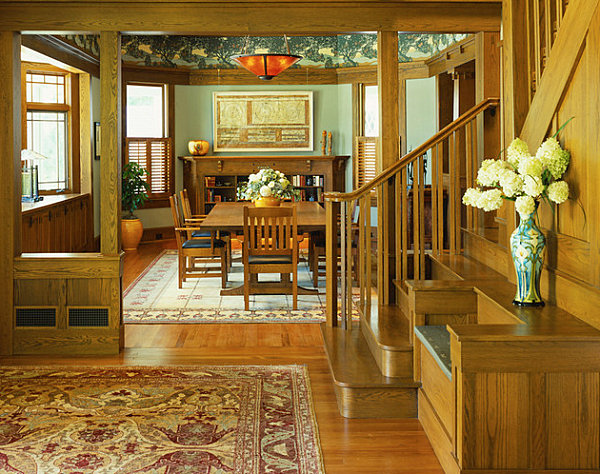
 Nimila
Nimila
